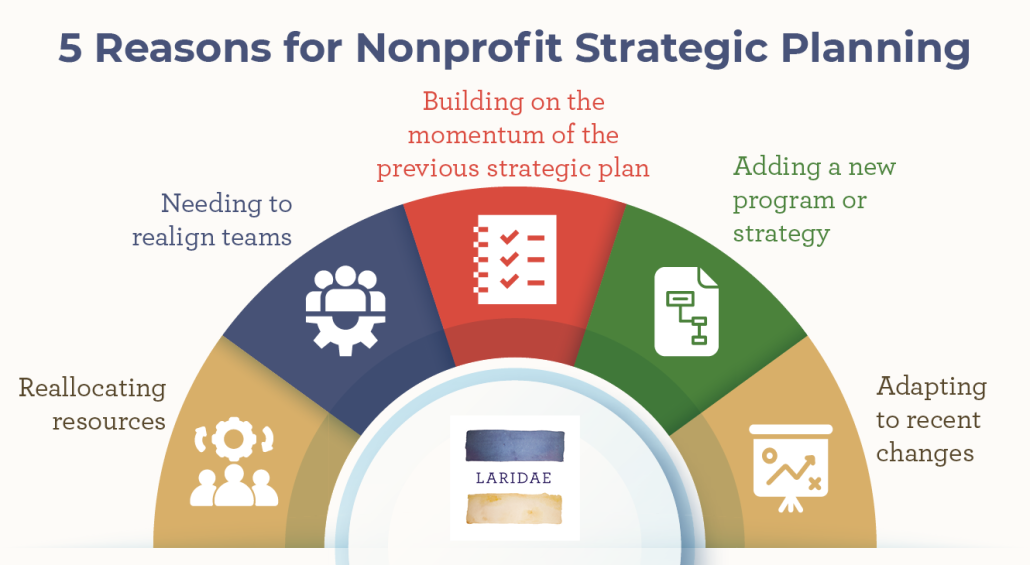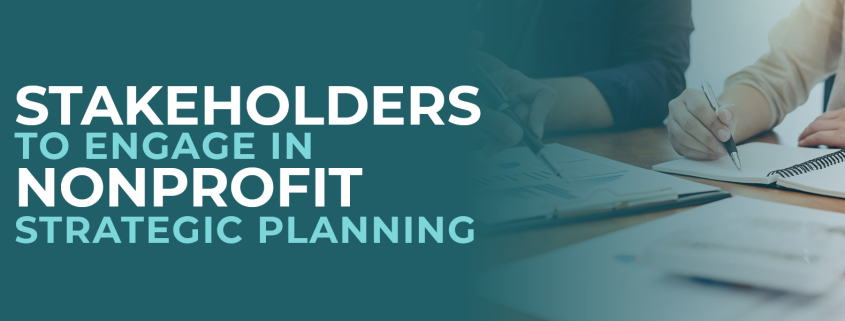6 Stakeholders to Engage in Nonprofit Strategic Planning
At any given time, your nonprofit has several goals and priorities to consider—whether that’s launching a new program or incorporating more sustainable fundraising initiatives into your strategy. As time goes on and circumstances shift, you need to have a strategic plan in place to keep your team on track.
Engaging a variety of stakeholders in your strategic planning process ensures that your plan reflects the interests of these important members of your community. With their input, you can refine your programs, secure more support, and direct your resources where they’ll make the most impact.
In this post, we’ll discuss all the basics you need to know about engaging stakeholders in strategic planning, including six key types of stakeholders to connect with.
The Importance of Stakeholder Engagement in Strategic Planning
According to Laridae’s strategic planning for nonprofits guide, an effective strategic plan can allow your organization to accomplish the following: 
- Reallocate resources. By conducting strategic planning, you can get a better grasp of where you should direct your time and funding to maximize your nonprofit’s impact. For example, you might realize that you need to focus more on improving your membership program to provide more value and retain these consistent contributors.
- Realign teams. With so much that needs to be done every day, your staff members may find themselves taking on more responsibilities over time. A strategic plan reduces mission drift and keeps everyone aligned on which tasks will best fulfill your mission. For instance, you might find that you’ve been pursuing corporate sponsors who don’t share similar values with your nonprofit and adjust your sponsorship strategy accordingly.
- Build on the momentum of a previous plan. Typically, a nonprofit strategic plan serves as a roadmap for success over the next three to five years. At the end of this timespan, your nonprofit needs to go through the process once more to create a new plan that considers the changes you’ve experienced, new needs within your community, and any other factors that might impact your goals going forward.
- Add a new program or strategy. If your nonprofit is preparing to launch a significant initiative, such as a new program for your beneficiaries or a dedicated major gift fundraising strategy, a strategic plan lays out exactly how you plan to accomplish this.
- Adapt to changes. If you’re experiencing notable changes within your focus area or sector, strategic planning allows you to adapt effectively and continue fulfilling your mission. For example, if a global event has led to an increased need for your nonprofit’s services within the community, your strategic plan can specify how you’ll address this need without putting too much strain on your staff or resources.
To produce a well-informed strategic plan, you need to understand your nonprofit’s current strategies, priorities, and impact. Collect the key data you need to guide your planning by intentionally engaging your stakeholders.
6 Types of Stakeholders to Engage in Strategic Planning
No two stakeholders have the same experience or relationship with your nonprofit. Because of this, it’s important to engage a broad range of stakeholders during your strategic planning process. Be sure to include these six types of stakeholders:
1. Beneficiaries
Your beneficiaries directly benefit from your nonprofit’s programs and activities. By soliciting their feedback, you can ensure that you’re addressing their most pressing needs. For example, if you learn that your services have any barriers to access, whether financial or linguistic, you can make it a priority in your strategic plan to make more inclusive improvements moving forward.
2. Staff Members
Your staff members have daily experience with your nonprofit and a clear window into your on-the-ground impact. Survey these stakeholders to determine if you’re providing them with the resources they need to thrive in their roles. You might decide to invest in management training to build more cohesive teams or adopt new software to facilitate collaboration.
3. Donors
Your nonprofit relies on the support of its donors to continue fulfilling its mission. Strengthen these impactful relationships by asking about their giving experience and preferences. If your donors want to receive more updates about the impact of their gifts, for instance, you can decide to enhance your communication strategy in your strategic plan.
4. Volunteers
eCardWidget’s volunteer retention guide recommends surveying your volunteers regularly to demonstrate that you value their commitment and input. These individuals make first-hand contributions to your impact and have the ability to provide an outside perspective into your nonprofit’s initiatives.
5. Board Members
Your nonprofit’s board members serve many roles, from overseeing capital campaigns to participating in your strategic planning sessions. By engaging board members, you can make sure that your team is aligned on internal and external priorities before proceeding.
6. Partners
Many nonprofits partner with other community service providers to collaboratively address community needs and increase the impact of their programs. Be sure to reach out to these partners during your strategic planning process to align on your shared goals, anticipate any challenges to address together, and clarify how you’ll coordinate your efforts moving forward.
Bonus Tips for Effective Stakeholder Engagement
When it comes to engaging your stakeholders during strategic planning, it’s vital to encourage honest, open conversations. Use these tips to design comfortable opportunities for people in your nonprofit’s community to share their feedback:
- Use multiple formats to engage stakeholders. Different people will have different preferences for expressing their opinions. Consider setting up one-on-one interviews, online surveys, focus groups, and town hall meetings to facilitate meaningful conversations. Adding virtual formats can provide added convenience to your participants and allow you to expand the number of stakeholders you reach.
- Reach out to a nonprofit consultant. One way to set your stakeholder engagement and strategic plan up for success is by partnering with a consultant who specializes in nonprofit strategic planning. These experts act as a neutral third party to foster more authentic discussions with your community members and boil them down into powerful insights to apply to your planning.
- Thank stakeholders for participating. Remember that stakeholders are offering up their time to provide thoughtful responses related to your nonprofit’s mission and initiatives. Take the time to send a follow-up email or eCard to express your appreciation for supporting your strategic planning journey.
Whether they’re a staff member or donor, your stakeholders want to feel connected to your nonprofit’s strategies and impact. Engaging these individuals will both benefit your strategic plan and nourish these essential relationships over time.
After you’ve completed your strategic plan, demonstrate transparency by sharing it with your stakeholders. Consider publishing it on your nonprofit’s website, then link to it in your email newsletters and social media posts. You can even host a presentation to summarize your strategic plan and answer any questions your community may have about it.
By communicating your strategic plan, you can build trust among your stakeholders, ensuring that they’re happy and eager to share their feedback the next time you need to undergo the process.
